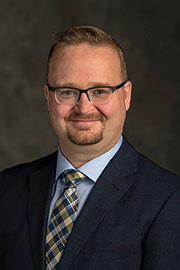- May/10/23 11:40:00 a.m.
I’d like to remind the House that in room 247, the Nigerian delegation is there. You’re welcome to join us there today.
Deferred vote on the motion that the question now be put on the motion for third reading of the following bill:
Bill 71, An Act to amend the Mining Act / Projet de loi 71, Loi modifiant la Loi sur les mines.
- Hear!
- Rabble!
- May/10/23 11:40:00 a.m.
Mr. Speaker, we have invested more than $1.2 billion towards helping communities through the Social Services Relief Fund—$1.2 billion to help with food, to help with the cost of housing; investing $83 million through the Ontario Trillium Foundation to support non-profit organizations, including food banks; $8 million in support for funding Feed Ontario. Mr. Speaker, every single measure that we’ve taken to help Ontarians during the cost of high prices everywhere, the NDP continuously votes against. They will never support lowering costs in this province. You’ve seen them; you’ve heard them. They’ll say one thing here in the House, but as soon as it comes to actions, they’re MIA. They don’t exist.
It’s this Premier and it’s this government that says we’ll make sure that every single Ontarian is supported and no one is left behind, and we’ll put—
Interjections.
- Hear!
- Rabble!
- May/10/23 11:40:00 a.m.
Again to the Premier: Food banks in London and across Ontario are stretched to the limit. In just the last year, the London Food Bank saw a 40% increase in demand. The Emergency Food Cupboard at the Northwest London Resource Centre in my riding is seeing five or six new families a day. When people can’t afford food, their physical and mental health suffers. It causes more chronic conditions, more non-communicable diseases, more infections, depression, anxiety and stress.
Speaker, will this government listen to the Middlesex-London Health Unit, lift people on social assistance out of legislated poverty and increase social assistance rates?
Interjections.
- Hear!
- Rabble!
- May/10/23 11:40:00 a.m.
- Re: Bill 71
Speaker, there are friends throughout the gallery; I think it would take up the five minutes that we have if I went through the list.
I do want to welcome all of my friends and supporters who are here today. Thank you for taking the time and for supporting me in the decade that I have served.
I would like to acknowledge that my mom, Yvonne Hunter, is here. My eldest brother, Maurice Hunter, is here. And I always call him my little brother—my youngest brother, Andrew Hunter, is here, as well.
I also want to acknowledge my constituency staff who are here. Mohammed Patel is here. Julianna Atanasovski is watching—and Jonathan Patch, and also my intern, Daniel.
Thanks to all of you for being here and for joining me today. Welcome to Queen’s Park.
- Hear!
- Rabble!

- May/10/23 11:40:00 a.m.
- Re: Bill 71
The ayes are 78; the nays are 30.
Pursuant to standing order 63, your committee has selected the 2023-24 estimates of the following ministries for consideration: Ministry of the Attorney General; Ministry of Francophone Affairs; Ministry of Indigenous Affairs; Ministry of the Solicitor General; Ministry of Public and Business Service Delivery.
Report presented.
Bill 85, An Act to implement Budget measures and to amend various statutes / Projet de loi 85, Loi visant à mettre en oeuvre les mesures budgétaires et à modifier diverses lois.
- Hear!
- Rabble!
- May/10/23 11:40:00 a.m.
I want to thank the member from Carleton for that important question.
Time and again, the only thing we ever hear from members opposite is no. What they fail to realize is that reducing red tape is about the impact these changes are having on real people and businesses across our great province—changes like helping businesses embrace new technologies like carbon capture and storage. Reducing red tape on these projects will unleash innovation, and it will create hundreds of millions of dollars in new investments right across our great province.
While our government knows there is a tremendous economic and environmental potential for carbon storage, the opposition wants to keep the red tape barriers in place. Mr. Speaker, we are never going to let that happen. Our government will never stop fighting for a better future for Ontarians and make sure our province is prosperous.
I also want to point out that I’ve yet to receive a single idea from any of the members opposite. They don’t even have a critic responsible for red tape reduction. While this is disappointing, it is not unexpected. That’s because, as we all know, the Liberals, supported by the NDP, came up with the highest burden the province had in the country.
However, since 2018, our government has taken strong action to cut Ontario’s regulatory burden by over 16,000 regulatory compliance requirements, which helps businesses big or small with, on average, $700 million annually.
- Hear!
- Rabble!
- May/10/23 3:10:00 p.m.
I have a petition here:
“To the Legislative Assembly of Ontario:
“Whereas Haldimand county has requested a ministerial zoning order to accelerate the development of a proposed city of 40,000 people on industrial-zoned buffer land in the Nanticoke industrial park; and
“Whereas the housing development will grow the population of the Port Dover-Nanticoke area from approximately 7,000 to 47,000 people; and
“Whereas this development will have a significant impact on infrastructure such as roadways; and
“Whereas 40,000 people living in the Nanticoke industrial park buffer zone is a threat to area jobs in steelmaking, oil refining and the related trades;
“We, the undersigned, petition the Legislative Assembly of Ontario to not grant the Haldimand county request for an MZO.”
I support this petition. I will affix my signature to it and send it to the table with page Sophie.
- Hear!
- Rabble!
- May/10/23 3:10:00 p.m.
“In Support of Improving Accountability and Transparency in Ontario.
“To the Minister of Education:
“Whereas the government is committed to delivering a world-class education system that helps prepare students for the jobs of tomorrow; and
“Whereas the legislative changes proposed through the Better Schools and Student Outcomes Act, together with future regulatory amendments, would, if passed, lay the groundwork for a truly world-class education system, unified with a singular focus to improve student outcomes in important lifelong skills like reading, writing and math; and
“Whereas Ontario school boards are not consistently working toward the same priorities, school board performance varies across the province on indicators related to literacy, math, graduation and student attendance; and
“Whereas some parents can review and assess their school board’s performance while other boards do not proactively share this information; and
“Whereas in response Ontario is taking action through proposed legislation to set student achievement priorities and expectations for Ontario’s education sector, and proposed legislative and future regulatory changes, if passed, would allow the Minister of Education to set provincial priorities to:
“—focus boards in important areas of student achievement like reading, writing and math;
“—require school boards to report on progress toward these priorities and enable the Ministry of Education to support struggling boards sooner;
“—allow the minister to require school boards to make any report that the minister may require from the board available to the public;
“—require enhanced school board financial reporting on funding and spending, planned and actuals;
“—allow the minister to strengthen rules around financial accountability and transparency;
“—allow the minister to prescribe school board limitations in participating in business activities that could place school boards in financial risk;
“—allow the minister to enhance the financial accountability of school board-controlled entities, promote greater school board-municipality co-operation on delivering child care and enable an accelerated apprenticeship pathway;
“We, the undersigned, petition the Legislative Assembly as follows:
“To support the Better Schools and Student Outcomes Act, 2023, and ensure its passage.”
I’m happy to sign my name to this petition and provide it to Christopher.
- Hear!
- Rabble!
- May/10/23 3:10:00 p.m.
I was very pleased to meet with some of the folks from Save the Minden ER today at Queen’s Park. I want to thank Richard and the folks who set up signing set-ups at coffee shops and corner stores to get 17,107 names. I just have a couple of pages here, though, Speaker.
“To the Legislative Assembly of Ontario:
“Whereas the Haliburton Highlands Health Services board of directors has, without consultation with the affected stakeholders, announced the permanent closure of the emergency department located in the municipality of Minden Hills, Ontario, effective June 1, 2023;
“We, the undersigned, petition that a moratorium of this decision be implemented by the Ministries of Health and Long-Term Care immediately for a period of a minimum of one year to allow for consultations with all affected stakeholders to occur.”
I’m pleased to affix my signature and will send this to the table with page Maya.
- Hear!
- Rabble!
- May/10/23 3:10:00 p.m.
What I hold in my hand is just part of 17,107 signatures.
“To the Legislative Assembly of Ontario:
“Whereas the Haliburton Highlands Health Services board of directors has, without consultation with the affected stakeholders, announced the permanent closure of the emergency department located in the municipality of Minden Hills, Ontario, effective June 1, 2023;
“We, the undersigned, petition that a moratorium of this decision be implemented by the Ministries of Health and Long-Term Care immediately for a period of a minimum of one year to allow for consultations with all affected stakeholders to occur.”
I fully support this petition. I will affix my signature and pass it to page Frederick to take to the table.
- Hear!
- Rabble!
- May/10/23 3:10:00 p.m.
I have a petition to address homelessness in Ottawa:
“To the Legislative Assembly of Ontario:
“Whereas, per the 2023 Ontario budget, the province of Ontario has allocated $48 million in additional funding to address homelessness in Toronto, yet only $845,100 for the city of Ottawa;
“Whereas this amounts to 60 times more funding for Toronto, despite being just three times the population of Ottawa;
“Whereas this shortfall in funding for Ottawa will severely compromise the city’s 10-year housing and homelessness plan;
“Whereas this will result in the cancellation of 54 new housing units scheduled to be completed within 18 months, and hundreds more over the next 10 years in the second-largest city in the province;
“We, the undersigned citizens of Ontario, petition the Legislative Assembly to provide Ottawa with its fair share of funding to address the homelessness crisis and alleviate the suffering of its most vulnerable citizens.”
I agree with this petition. I’m signing it and giving it to Liam.
- Hear!
- Rabble!
- May/10/23 3:10:00 p.m.
I have a petition entitled “To Address Homelessness in Ottawa.
“To the Legislative Assembly of Ontario:
“Whereas, per the 2023 Ontario budget, the province of Ontario has allocated $48 million in additional funding to address homelessness in Toronto, yet only $845,100 for the city of Ottawa;
“Whereas this amounts to 60 times more funding for Toronto, despite being just three times the population of Ottawa;
“Whereas this shortfall in funding for Ottawa will severely compromise the city’s 10-year housing and homelessness plan;
“Whereas this will result in the cancellation of 54 new housing units scheduled to be completed within 18 months, and hundreds more over the next 10 years in the second-largest city in the province;
“We, the undersigned citizens of Ontario, petition the Legislative Assembly to provide Ottawa with its fair share of funding to address the homelessness crisis and alleviate the suffering of its most vulnerable citizens.”
Mr. Speaker, I agree with this petition. I will sign it and give it to page Mackenzie to bring to the table.
- Hear!
- Rabble!
- May/10/23 3:10:00 p.m.
“Whereas the federal government is increasing the escalated carbon tax by 14%, on April 1, 2023;
“Whereas carbon tax cost increase will put more pressure on consumers who are already struggling with inflation;
“Whereas we call on the federal government to stop the carbon tax, which is a tax hike that Ontarians and Canadians cannot afford;
“Whereas the government of Ontario is helping to reduce the cost of living by keeping taxes low, freezing and eliminating licence plate renewal fees and scrapping the requirement to have licence plate stickers for passenger vehicle, light-duty trucks, motorcycles and mopeds and building on these measures in Bill 85, Building a Strong Ontario Act (Budget Measures), 2023, the government continues to help Ontarians with the cost of living;
“Whereas we call on the Ontario government to urge the federal government to halt the carbon tax increase, that will raise the cost of everything;
“Therefore we, the undersigned, petition the Legislative Assembly of Ontario as follows:
“To support the passage of Bill 85....”
I support this petition and sign my name to it and give it to page Akshitha.
- Hear!
- Rabble!
- May/10/23 3:20:00 p.m.
I recognize the government House leader on a point of order.
I’m pleased to recognize the member for Scarborough–Guildwood.
- Hear!
- Rabble!
- May/10/23 3:20:00 p.m.
I have a petition regarding homelessness in Ottawa.
“To the Legislative Assembly of Ontario:
“Whereas, per the 2023 Ontario budget, the province of Ontario has allocated $48 million in additional funding to address homelessness in Toronto, yet only $845,100 for the city of Ottawa;
“Whereas this amounts to 60 times more funding for Toronto, despite being just three times the population of Ottawa;
“Whereas this shortfall in funding for Ottawa will severely compromise the city’s 10-year housing and homelessness plan;
“Whereas this will result in the cancellation of 54 housing units scheduled to be completed within 18 months, and hundreds more over the next 10 years in the second-largest city in the province;
“We, the undersigned citizens of Ontario, petition the Legislative Assembly to provide Ottawa with its fair share of funding to address the homelessness crisis and alleviate the suffering of its most vulnerable” residents.
I agree with this petition, will sign my name and pass it on to Randall.
- Hear!
- Rabble!
- May/10/23 3:20:00 p.m.
I rise for my final time in this chamber. I am resigning my seat this week to seek elected public office and to continue my public service in another venue. I do so with no regrets, as there are big issues to attend to elsewhere in my city, Toronto.
However, I cannot help but reflect on my tenure in this place. Thank you, Mr. Speaker, for the opportunity to do so.
I was elected in a by-election in 2013 and re-elected three times since. I am proud to have served the people of Scarborough–Guildwood.
Scarborough is the community where my family and I ended up when we emigrated from Jamaica. Scarborough is where I grew up and came of age, where I went to public school and to university, where I started my working life. I love my community, and I am proud to have advocated on the community’s behalf for better hospitals, for better health care, for better transit and for better services for my constituents.
In my nearly 10 years in the Legislature, I have sat on both sides of this House: minority government, majority government and opposition. What can I say? It has been a journey.
I was proud to serve in cabinet as the Associate Minister of Finance and also as the parliamentary assistant to the Minister of Community and Social Services—I know Community Living is here today, one of those great social service agencies—as Minister of Education and as Minister of Advanced Education and Skills Development.
At finance, I was charged with designing a made-in-Ontario pension plan, the Ontario Retirement Pension Plan. The ORPP was really the catalyst for the Canada-wide expansion of the Canada Pension Plan. I call it CPP 2.0. That really benefited all working Canadians, now and far into the future.
I also helped to create the foundations for multi-employer pension plans, or MEPPs, which created the University Pension Plan, making sure that we have retirement security for those workers, and also for financial literacy being mandatory in grade 10.
I was very proud to be the first Black woman in the history of our province to be Minister of Education. In this role, I found myself in a position where my ministry team said, “Minister, great news. Graduation rates have hit a record high of 86.5%.” Wonderful, but then I was forced to ask the uncomfortable question: Who is in the 13.5%? The ministry team had all the numbers, and it was so revealing: Black students, especially Black male students, half of whom were not graduating. Who else? LGBTQ2SL+ students, students with disabilities, Indigenous students, students in the care of children’s aid—all of them not graduating in the numbers they should be. I told my ministry team there’s nothing wrong with our students; it’s not the students who need to change. It’s the system that needs to change. It’s the system that must change: change to support our students, change so that they can succeed.
That’s why I am grateful for the opportunity to have been the Minister of Education. It meant that I had the opportunity to implement Ontario’s Education Equity Action Plan, created to improve education outcomes for students—all students of all backgrounds. It meant working with parents, educators, principals, board staff, trustees, labour unions and representatives and the entire community to identify and eliminate discriminatory practices, systemic barriers and biases from the schools and the classrooms.
It meant shifting the culture in our classrooms by applying an equity, inclusion and human rights perspective to the entire Ministry of Education, then tracking our progress to measure success and results. It meant increased fairness in the hiring and promotion of staff and educators by removing barriers for under-representation and under-represented communities.
When students see themselves reflected in their learning environments, they are more likely to feel a sense of belonging, a sense of inclusion, a sense of well-being. It meant doing everything possible to ensure that race, disability, gender and socio-economic status do not prevent students from achieving the success they deserve. Instead of the system leaving some students behind, we changed the system so no students are left behind, including students with learning disabilities. I’m very proud of that.
In opposition, I’m proud of my private member’s Bill 232, Local Choice for Local Elections, which would have restored the ability of municipalities to decide for themselves, without needing to go to the province, if they want to elect their local representatives by ranked ballot elections.
I am so proud of my private member’s Bill 60—and this bill was introduced a few times—the Safe and Healthy Communities Act (Addressing Gun Violence), which was designed to treat gun violence as a public health issue, permitting health boards to develop programs to address gun violence and amend the Health Insurance Act to ensure that OHIP funds trauma-informed counselling for survivors, essentially breaking the cycle of violence in our communities. Although the bill did not pass, and I’m sad to say that, the main elements were adopted by Sunnybrook Hospital and St. Mike’s hospital, and it is working.
I am so pleased that this bill was also endorsed by Toronto city council, and I look forward to many more opportunities in the future to put initiatives in the public interest before council for their endorsement.
In closing, I wish to thank friends and colleagues here, all around the chamber—I see you—for all your support. And I want to say thank you to all parties on both sides of the aisle as well. I wish to thank you for your hard work.
I want to also thank the hard-working staff of the Ontario public service whose support ensures that everything we do in government gets done.
I wish to thank my wonderful constituents from Scarborough–Guildwood. Thank you for your support these past 10 years.
Thank you to my friends and my family and my supporters who are here today, especially those from the Ontario Liberal Party. You are family.
Thank you, Mr. Speaker, for this opportunity. I want to say thank you to my colleagues in my Liberal caucus, my wonderful friends. I want to say thank you to my seatmate, the leader of our party. Thank you so much for all you’ve done. We were elected on the same day and have gone through so much together. Thank you to the member from Ottawa South.
So, finally, all I want to say to all of you is thank you. Stay tuned. The best is yet to come.
Applause.
- Hear!
- Rabble!
- May/10/23 3:20:00 p.m.
It’s my honour to present the following petition on behalf of Save the Minden ER group with part of the 17,107 signatures—collecting 95% of the population’s signatures is a pretty strong mandate.
“To the Legislative Assembly of Ontario:
“Whereas the Haliburton Highlands Health Services board of directors has, without consultation with the affected stakeholders, announced the permanent closure of the emergency department located in the municipality of Minden Hills, Ontario, effective June 1, 2023;
“We, the undersigned, petition” the Legislative Assembly of Ontario “that a moratorium of this decision be implemented by the Ministries of Health and Long-Term Care immediately for a period of a minimum of one year to allow for consultations with all affected stakeholders to occur.”
I fully support this petition, will affix my signature and deliver it with page Mridul to the Clerks.
- Hear!
- Rabble!
- May/10/23 3:20:00 p.m.
Speaker, if you seek it, you will find unanimous consent to allow the member for Scarborough–Guildwood to immediately make a 10-minute statement concerning her upcoming retirement from this House.
- Hear!
- Rabble!
- May/10/23 3:30:00 p.m.
Firstly, I would like to take a moment to acknowledge and thank our officials from the Ministry of Legislative Affairs and our partner ministries for their incredible work on the Queen’s Park Restoration Act to get us where we are today.
I’d also like to take a moment to thank the parliamentary assistant, the member from Kitchener–Conestoga, for his work on this file.
I would also be remiss if I did not also thank the Ontario legislative staff, who work so hard day in and day out to keep this place running, as well as our colleagues on the Standing Committee on Procedure and House Affairs who have dedicated their time and efforts to bring us one step closer to beginning this important work.
Speaker, when we last sat here in the Legislative Building to debate this legislation, I was very keen to hear members from both sides sharing their first-hand experience with the current state of the building. We know the history of the building, and the special significance it holds for each of us will share common themes but also some unique perspectives. We know that we all care equally about the important work of democracy and legislation that takes place within these walls and the sense of public service and duty each of us has towards the work that we do here.
But each of us has also witnessed the little quirks and the deficiencies of the physical space too: the shoddy wiring; the outdated infrastructure; the almost complete and total inability to regulate the internal temperature in just about any season; the leaks through the ceilings, through the floors—the list goes on, and I’m sure we’ll hear more about the shortcomings that need to be addressed.
One thing I believe we agreed on in second reading debate was the necessity to not delay the vital task of restoring and modernizing this building.
Speaker, during second reading, I looked back at the history that has taken place since the last major renovation here at the Ontario Legislature. So let’s take another look: A north wing addition to the Legislative Building was completed in 1912 and soon accommodated a new legislative library; the original was destroyed during a 1909 fire in the west wing. The west wing was rebuilt using Italian marble and the addition of two more floors to house government departments. Since the television had not been invented at the time of the last major renovation, parliamentarians of the day would have read about the project in daily newspapers. Perhaps they picked up a copy of the Globe or a copy of the Mail and Empire, which would later merge and form the Globe and Mail several years later. Or maybe they saw coverage in the Toronto Daily Star, as it was known in those days.
Given that the Toronto Maple Leafs take to the ice tonight as they try to fight off a sweep, let’s take a look at what has changed in the NHL over the last 100 years. The Maple Leafs, led by Syl Apps from my riding of Brantford–Brant and Turk Broda, became the first NHL team to come back from being down three games to none in a playoff series. That was in 1942, 30 years after the addition of the north wing. Of course, the Toronto Maple Leafs did not even exist the last time this building underwent a major restoration. They were known as the Toronto St. Pats at the time, changing to the Maple Leafs a few seasons following the completion of the project. Maple Leaf Gardens also did not exist at the time parliamentarians walked through that recently renovated building. The NHL’s all-time leading scorer at the time was Newsy Lalonde. The penalty shot was introduced into the league in 1934, over a decade after the last major renovation to this place. The Zamboni was invented in 1949, several decades after the last major renovation to the Ontario Legislative Building. And then several years later, helmets would become mandatory for new players entering the NHL.
Speaker, all hockey references aside, it has been a long time since this building saw a major renovation—an unacceptably long time. The Ontario Legislative Building was built in 1893, more than 130 years ago, and has not undergone any major restoration work in over a century. Major infrastructure components of the building—including HVAC, electrical, plumbing, IT systems and physical security—have greatly exceeded their lifespan. To date, only minor, piecemeal repairs have been made to cover up these deficiencies. Further piecemeal repairs may buy some time, but they are only temporary and pretty much equal to putting a Band-Aid on a broken leg. If we want to save and restore the building for future generations, we must take action now and get the job done right.
As I mentioned, we have all witnessed these building deficiencies personally over the years—offices with wiring coming out of the floors, unsafe drinking water and inefficient heating and cooling, just to name a few. These are critical building systems and features that must be in good working order and that are essential to meet modern safety and operational standards. The vast amount of restoration work is increasing day after day. This is not something we should delay any longer.
Speaker and colleagues, we have an obligation to restore and save the Legislative Building. Queen’s Park symbolizes our enduring commitment to democracy and responsible government, and we need to uphold that commitment for the constituents we serve and the people of Ontario. To define it simply, I would say that the Legislative Building serves as the centre of government where Ontario’s elected representatives debate and pass laws. That definition really does not do much justice to the importance of the space and all the tangible effort that it takes to keep things running smoothly. I mean that in reference to our healthy democracy and the day-to-day operations of this building. Queen’s Park houses the Legislative Assembly of Ontario, offices of the members of the assembly, offices of members of the press and the Office of the Lieutenant Governor. And although we are privileged and fortunate enough to walk through the building every day, the Legislative Building really belongs to the people of Ontario.
It took six years to build. It is made of pink sandstone quarried from the Credit Valley near Orangeville, Ontario, and carved on the grounds by English stonecutters, giving it its characteristic nickname, the Pink Palace. It stands tall and proud in the heart of Toronto. We have all felt our eyes drawn to it when driving or walking up University Avenue. Queen’s Park holds great architectural and cultural significance in Ontario’s heritage. It is lined with beautiful wood carvings from mahogany and sycamore trees. It houses beautiful paintings and artifacts, each telling a piece of our province’s and our country’s unique history.
At its very core, Ontario’s Legislative Building is a public space. For many generations, it has been a place for people to come together, to connect with one another, to express themselves and to make real change in their communities. It has been a place of discovery and curiosity, where students and visitors can learn about the history, the traditions and the operations of our Parliament and our democracy, where people can even envision themselves sitting one day to help make a positive difference to and for the people of Ontario.
The Ontario Legislative Building has endured a rich and complex history since its construction in 1893. The building has stood the test of time and has remained a symbol of democracy, public service and civic engagement in Ontario to this day. It represents an important part of the province’s cultural heritage and history.
Speaker, colleagues, we stand here to debate bills as part of our job. And while we certainly don’t agree on everything, I am confident that we can all agree on one thing, and that is that we share a commitment to public service and to serving the people of Ontario to the best of our ability. To uphold that commitment, the time has come for us to give back to the building that we all know and that we all hold so dear. That is why, in March of this year, our government introduced the Queen’s Park Restoration Act, 2023, which would create the stable foundation for a complex multi-year restoration project of the Ontario Legislative Building. A full restoration of the building and fundamental infrastructure systems, including HVAC, electrical, plumbing, IT services and physical security, is needed to bring it up to modern safety, environmental and accessibility standards. Not only is this needed to address health and safety risks, but this restoration work will also help meet the needs of elected representatives who work in the building and enable them to serve the people of Ontario for years to come.
This project would be led by the government in collaboration with the Legislative Assembly of Ontario and overseen by parliamentarians from all parties. With this legislation, we are laying the foundation to set the project up for success. To guide this work, if passed, the Queen’s Park Restoration Act would establish a governance structure for the restoration project by establishing a robust accountability, collaboration and reporting framework.
First, the act would establish a ministry called the Queen’s Park Restoration Secretariat that would be responsible for overseeing and bringing the restoration project to completion.
Second, to ensure that the needs of the assembly are respected and taken into consideration, the act would define the oversight role of parliamentarians and set clear reporting and consultation requirements between the secretariat, a standing committee of the assembly and the Board of Internal Economy. The secretariat would be responsible for maintaining strong relationships with key internal and external stakeholders, partner ministries and the Office of the Lieutenant Governor.
To enable and support the work that the secretariat will spearhead, we are also proposing amendments to the Legislative Assembly Act and the Freedom of Information and Protection of Privacy Act. Amendments to the Legislative Assembly Act would provide appropriate oversight for the project by mirroring the roles and responsibilities that would be assigned to the secretariat. These amendments would also ensure the continued operation of the Board of Internal Economy by allowing the board to appoint alternate commissioners if a member is absent or unable to fulfill their duties and upon dissolution of Parliament. This would mean that the Board of Internal Economy could remain fully constituted to ensure the continuity of board operations and the ability to carry out its powers and duties, including providing advice to the secretariat for the restoration project.
In addition, the amendments to the Legislative Assembly Act would tie the role of government House leader to the minister of the secretariat. This ensures that the minister responsible for the execution of the restoration project is closely linked to the Office of the Assembly stakeholders and the oversight bodies, the Board of Internal Economy and a standing committee of the assembly.
Furthermore, the amendments to the Legislative Assembly Act would allow the responsibility for the legislative precinct to be temporarily assigned to the secretariat to facilitate the relocation of the assembly during the restoration work on the Ontario Legislative Building.
I want to touch on the subject of decanting the Legislature for the duration of the restoration. It is a vital step in this process and intended to keep everyone safe and our business of governance running smoothly. With all the risks to our health and safety that we have in this building—the asbestos, the fire hazards, an inefficient steam heating system—there is no way to complete this project properly other than decanting, to get us all out of here. This means moving us all out of Queen’s Park and into another location to allow for the critical restoration work to happen.
If passed, these legislative changes would provide for consultation with stakeholders on options for a potential temporary location to house legislative business. While the government will be responsible for preparing a temporary location for the Legislature, parliamentarians will have approval of the decision to relocate through the Board of Internal Economy.
To protect the autonomy of the Legislative Assembly and allow for the free flow of information between the assembly and the government throughout the project, we are proposing an amendment to the Freedom of Information and Protection of Privacy Act, also known as FIPPA. This amendment would create a time-limited exemption for records prepared by the assembly in respect of the Queen’s Park restoration project until 20 years after the repeal of the Queen’s Park Restoration Secretariat Act, 2023.
This time-limited FIPPA exemption is necessary to maintain the existing exemptions which the Legislative Assembly currently has through the duration of the project. This would ensure that the assembly records and advice can be freely shared with the secretariat without the need for redaction or concern over disclosure. Any project records created by the secretariat would remain subject to FIPPA as well as the Archives and Recordkeeping Act.
Given the extensive scope of the project, the creation of a secretariat with a single focus is essential to ensure an appropriate governance structure is in place to implement such a large-scale project. The complexity and scale of this project and the relationships among stakeholders require a distinct administrative unit of government to oversee it.
We have seen how well an all-party committee has worked with the Board of Internal Economy and in many other situations. By collaborating with the Office of the Assembly, the Board of Internal Economy and a committee of members from all parties, we can leverage our significant expertise in managing large-scale infrastructure projects. This also means that, regardless of which government is in power, the project will be completed effectively, efficiently and in a way that is responsive to the unique needs of parliamentarians and the people that they serve.
We have taken so many strides forward and made history as a society. Over the past 130 years, we have seen the discovery of X-rays in 1895, which revolutionized medical imaging; the first commercial radio broadcast in Canada, in 1929, which was made by station CKGW in Toronto; the first human space flight, in 1961; the signing of the Canadian Charter of Rights and Freedoms, in 1982, a cornerstone of Canadian democracy; and the growing popularity and production of electric cars and self-driving cars in more recent years.
Just in the past few decades, we have seen technology continuing to advance at such an unprecedented rate since the introduction of the Internet, which has now arguably become essential to our lives. From how we work to how we communicate, technology has made life easier and more convenient. It has made us feel more connected than ever before.
At the time the Legislative Building was built, these things were never, ever considered. We obviously did not have all of these technological advancements that are so deeply rooted in our lives today. We cannot allow ourselves to fall behind and to remain behind. The Legislative Building—the core of Ontario’s democracy—needs to be modernized to keep up with the digital world and to serve Ontarians better.
Ontario’s Legislative Building sits on the traditional territory of the Mississaugas of the Credit First Nation. The area of Queen’s Park, where we are today, was an important gathering place for First Nations communities. This land was once home to other Indigenous groups, including the Huron and the Haudenosaunee. With this restoration, we have an opportunity to reimagine the building, to make it meaningful and accessible for Indigenous communities and for all Ontarians. And, Speaker, both the Mississaugas of the Credit, their territory is in my riding—and the Haudenosaunee people, the Six Nations’ territory is in my riding.
We need to restore the physical elements of the building and also to really look at the building from the top to the bottom, to evaluate its potential and how we can enhance the role it plays in the lives of all Ontarians. Consultation with stakeholder groups and the public will be a critical element of the project. It will be a considerable undertaking, but this is absolutely necessary. The important public role of the Legislative Building means it is imperative that all Ontarians have the opportunity to provide input on its future state.
While security has been enhanced in the building over time and it is always top of mind, we need to consider and incorporate accessibility and inclusivity also. The restoration project also creates a unique opportunity to consult with specific populations, to ensure that the reconstructed Legislative Building reflects the diversity, the needs and the experiences of all Ontarians. Whether you are a visitor or whether you work in the building, all Ontarians should see themselves in the work that has to be done here. We need to consider how we can represent the people we serve and create a sense of belonging for everyone. We need to make it open and accessible for everyone, so people can access the building and places of democracy.
As part of the design and implementation of the restoration project, we will take on a variety of approaches to integrate best practices around accessibility, security, environmental sustainability and energy-efficiency standards. This includes the creation of advisory committees with relevant subject-matter experts, including persons with disabilities, accessibility groups and industry experts, who will provide advice and work with the secretariat to incorporate lessons learned from similar infrastructure projects.
While costs may be significant, the state of the Legislative Building’s systems leaves us with no alternatives. A comprehensive restoration of this 130-year-old building is extremely overdue. Speaker, if we delay this project any further, we will risk critical failure of fundamental building systems and additional safety risks that would prevent Parliament from operating.
I’m going to stop there, Speaker, because I have a few pages left, but I see my time is winding down. A few months ago, I had the opportunity to sit in your chair and to be Speaker for a model Parliament for high school students that were visiting. It was an incredibly moving opportunity to see young people filling all the seats in this chamber, debating legislation. They gave me the opportunity to speak, and I had no idea what I was going to say, but I reflected on the feeling that I had the first time—and I share with Mr. Romano in the back, there, every time we stand back there and look at this place. This is a very special place.
What makes our democracy function is a sense of faith and confidence in a system that works. That requires, after 800 years of the Westminster system, that we hold on to things that are old. We need to hold on to traditions. To me, that’s what makes rebuilding this place so critically important. We could do something else, and we could do it somewhere else, but holding on to these pieces of history, renewing them for future generations, is critical in order to maintain that faith that we have been handed and must pass on to those who come after us.
- Hear!
- Rabble!
- May/10/23 3:30:00 p.m.
Further debate?
- Hear!
- Rabble!


















